The Five-Step Design Process, Reimagined
How Octoco applies the SpaceX-inspired design philosophy to build smarter, faster, and more reliable technology.

Every great project begins with a bold idea. But between vision and delivery lies a series of decisions that determine whether that idea takes flight or fizzles out.
At Octoco, we’ve learned that the way you design and iterate matters just as much as what you build. Inspired by SpaceX’s five-step design process, our team has adapted this framework to the world of product development and engineering — a method that keeps projects focused, efficient, and resilient.
Led by G-J van Rooyen, one of our co-founders, this approach was recently unpacked in a masterclass with The Founder Collab (The Open Letter). The session explored how the five steps, first championed at SpaceX, are applied at Octoco to build better technology and deliver real results.
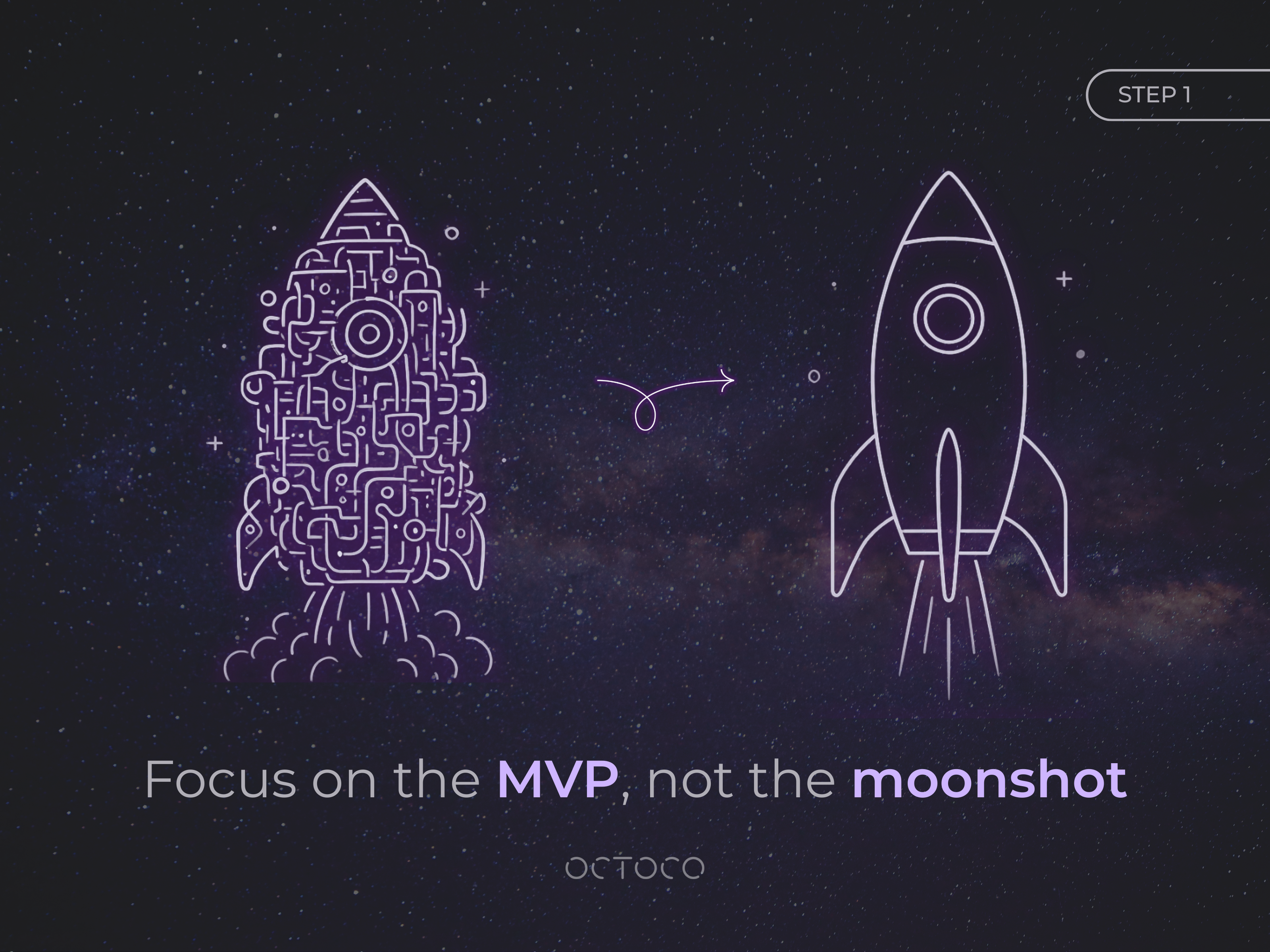
Step 1: Make the requirements less dumb
Every project starts with questioning. Do we truly need this feature now? What’s the minimum viable product? Are we solving the right problem or just the exciting one?
This first step is all about cutting through complexity. Making requirements “less dumb” doesn’t mean diluting ambition — it means refining it so it can actually take off.
For one client, an early concept was packed with innovative but overly complex features that risked slowing down the project. Instead of cutting corners, we worked with them to clarify the real priorities:
- Which features truly drove the goal forward
- What alternatives achieved the same impact more simply
- How to deliver something functional without losing the vision
The result was a product that stayed ambitious yet achievable — built to succeed rather than overreach.
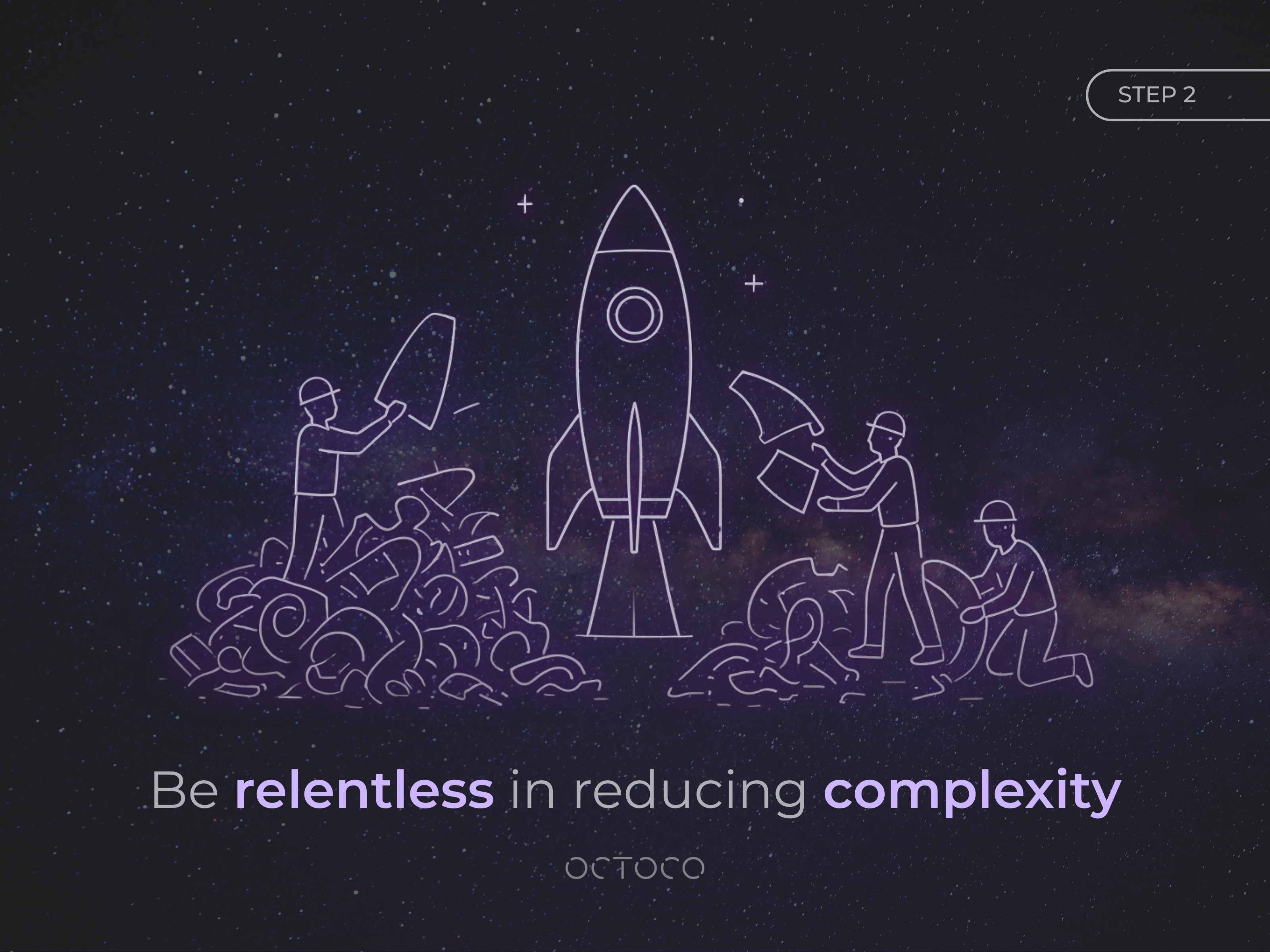
Step 2: Delete the part or the process
Once the goal is clear, the next step is to remove what doesn’t serve it.
Over-engineering is a common trap. “Just in case” features sound useful, but they often waste time and money, add technical debt, and end up unused.
At Octoco, our projects stay sharp by focusing on what’s essential:
- Time-capped engagements keep momentum high
- MVP lock-in ensures early clarity on goals
- Detailed scoping aligns teams on measurable outcomes
By cutting away unnecessary parts or processes early, we don’t shrink the vision — we sharpen it. Nothing wastes more time than building something nobody needs.
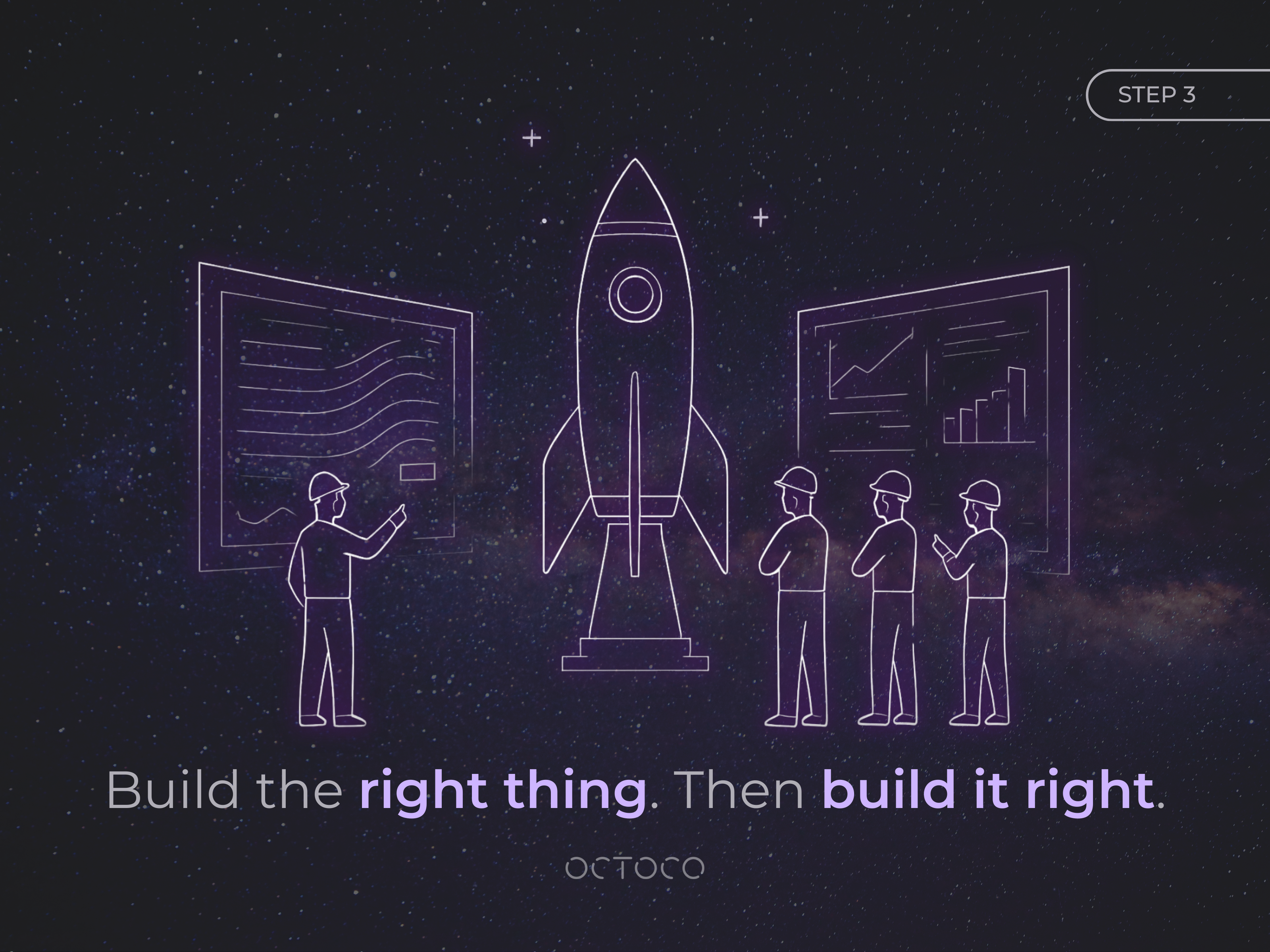
Step 3: Simplify before you optimise
Refinement is important, but timing is everything. Optimising too early is one of the easiest ways to lose momentum.
We follow Kent Beck’s golden rule:
- Make it work
- Make it right
- Make it fast
Only after a system works and meets its purpose do we focus on optimisation.
In one project, a specialised system worked but was painfully slow. Instead of rebuilding everything, we stripped out unnecessary processes, reimagined design flows, and optimised only what mattered to users. The final version was fast, elegant, and effective — because every improvement was driven by purpose, not perfectionism.
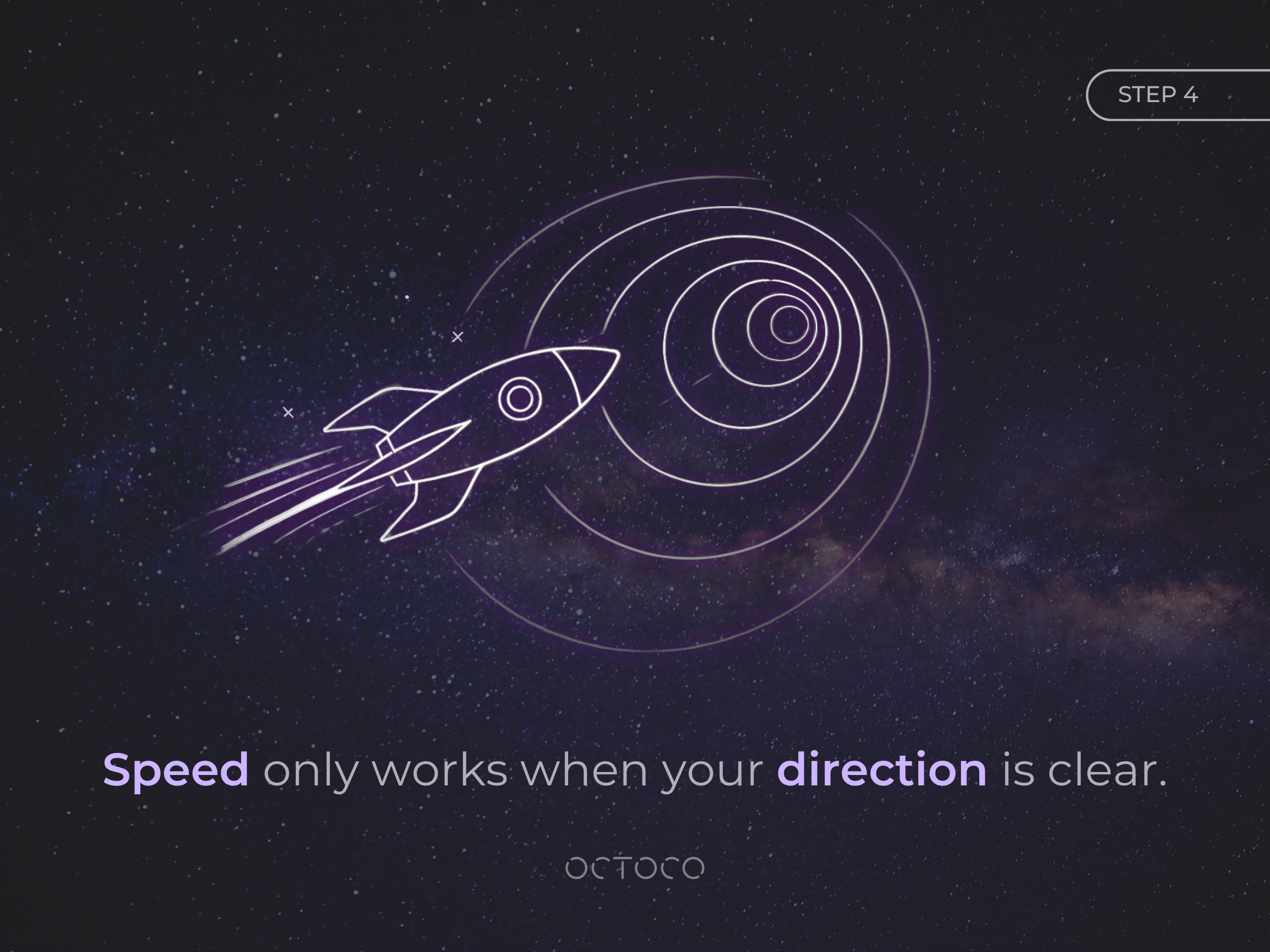
Step 4: Accelerate cycle time
Once the direction is clear, it’s time to move quickly. Speed, when applied at the right moment, compounds progress.
We focus on small, fast iterations and tight feedback loops — daily check-ins, weekly demos, and rapid movement from development to staging to production.
In one case, a client came to us with a prototype that missed the mark. Instead of a long redevelopment cycle, we reset the requirements and shifted into rapid builds. Within months, the product was ready for commercial launch.
When teams know what they’re building, working faster doesn’t add risk — it multiplies impact.
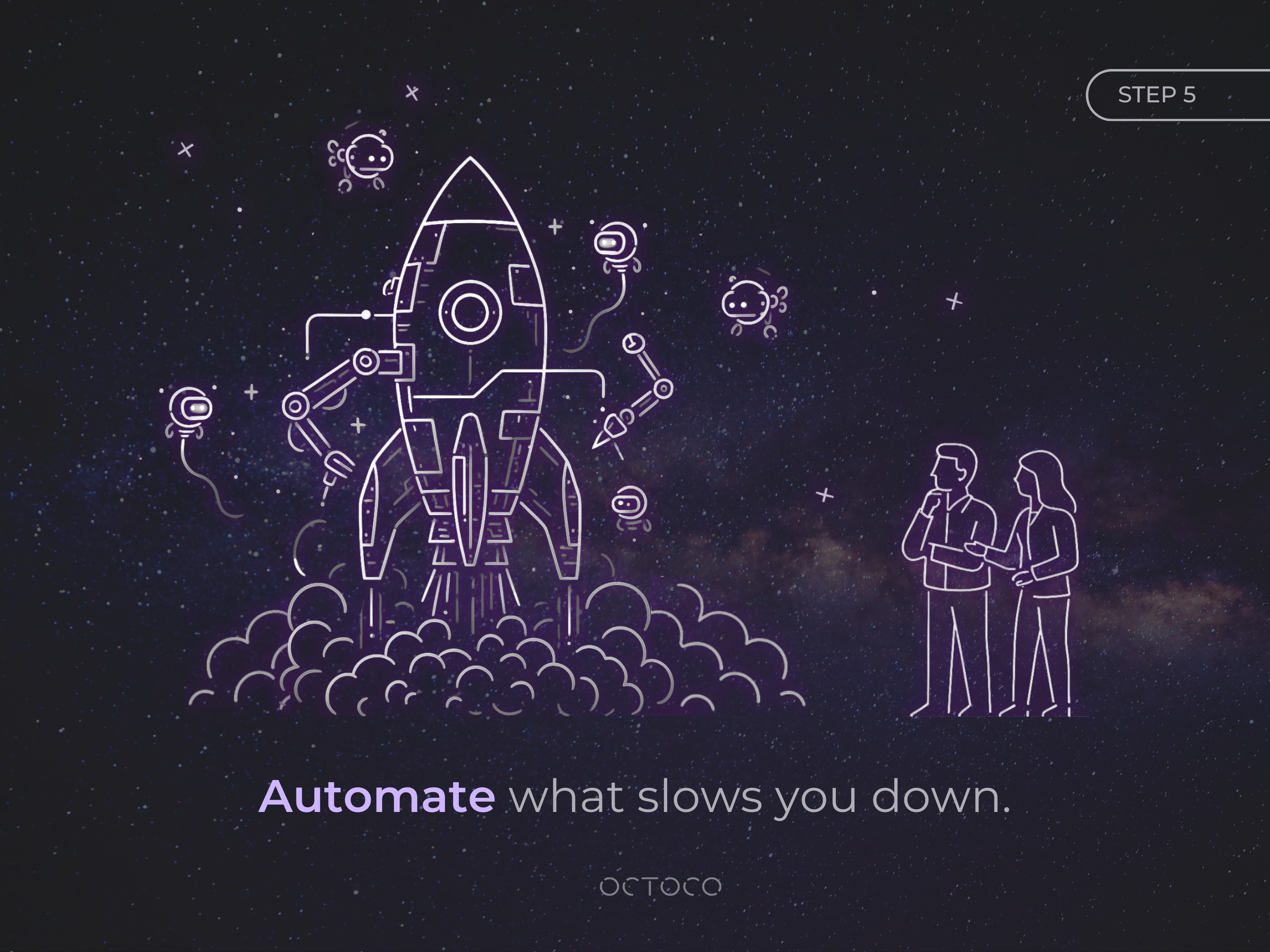
Step 5: Automate last
The final step is automation — but only once the process is proven.
Too often, teams automate too soon and end up locked into systems that don’t work. Early on, manual approaches allow for experimentation and adjustment. Once the system is stable, automation becomes the force multiplier that drives scale and consistency.
We automate where it matters most:
- Testing, to catch issues early
- Deployment pipelines, to reduce release friction
- Code formatting and performance metrics, for continuous improvement
Automation is the reward for clarity and discipline — the final polish that prepares a system for growth.
A culture of clarity and continuous improvement
At its heart, the five-step process is a mindset. It teaches teams to question assumptions, simplify early, move fast with purpose, and never automate chaos.
By applying these principles, Octoco builds technology that’s not only functional but adaptable — designed to evolve as quickly as the world around it.
This process doesn’t just create better systems. It creates better ways of thinking. And that’s how ambitious ideas turn into breakthrough results.